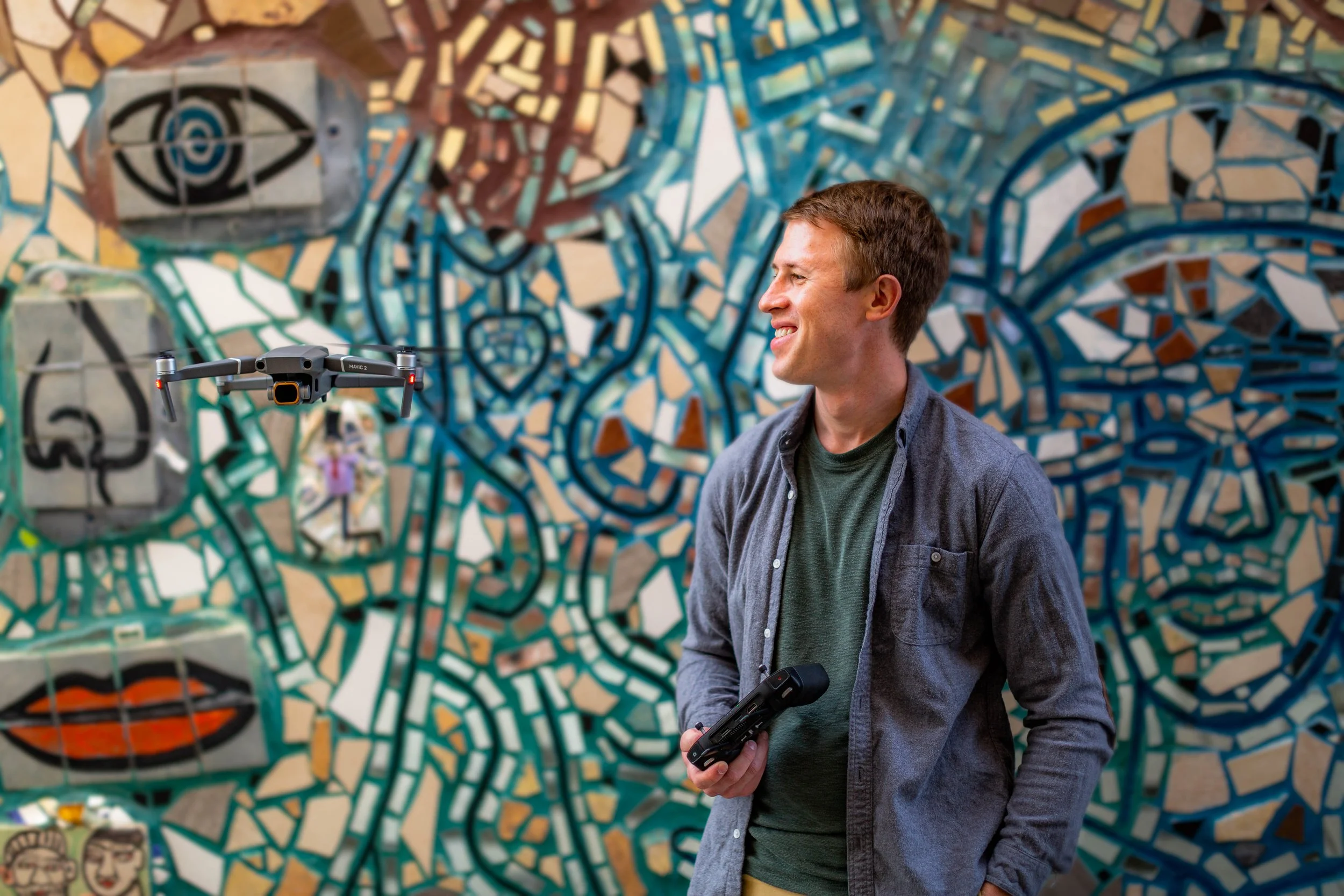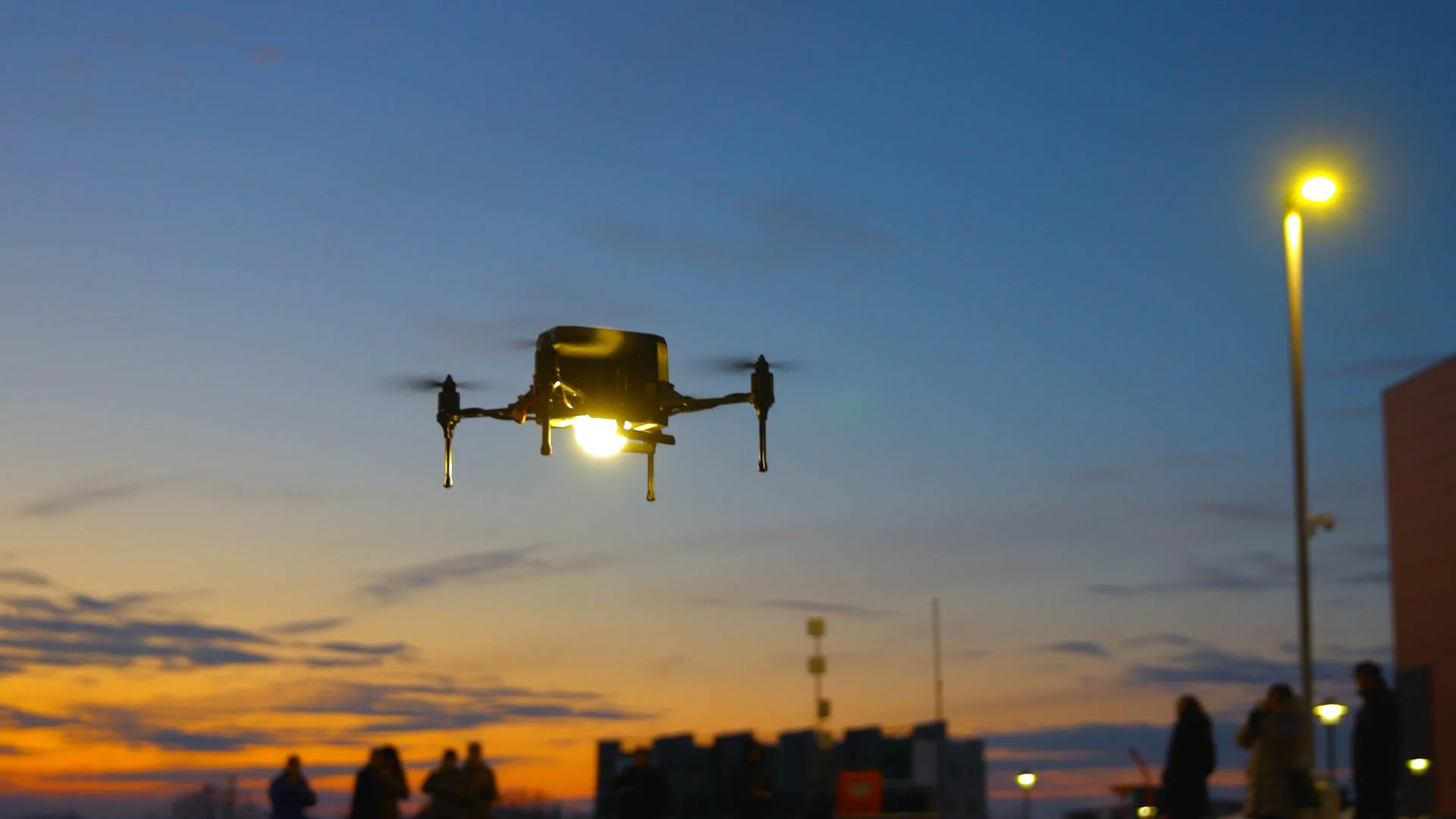Reflecting on High-Flying Drone Video Content
When drones first came out, they were mostly used to get high angles and provide a view that was different from what audiences were used to seeing. While that approach can be eye-catching, it’s important to keep in mind the impact this new perspective has on audiences.
We’re now seeing drones fly at lower angles and through scenes to show how all the pieces of a story tie together. This technique allows viewers to see your business in new and exciting ways. Get to know more about best practices in drone footage through a recent conversation with Patrick Rosenbaum and Ed Seiders who are two team members that are certified to fly drones.
What do you enjoy about using drones at video shoots?
Patrick: Drones are one of the most fun and creative ways to show off an area for our clients, because it’s an entirely new perspective to showcase in their marketing materials. For me, I really enjoy the finding unique angles of spaces and performing large sweeping moves to show as much depth as possible from the sky.
Ed: Drones have quickly become a critical tool for video production companies to really show the scale of an environment, size of crowd or the unique bird's eye view that many people may never get to experience. It brings new angles and perspective to, in some cases, otherwise 2D objects and situations. To be able to capture objects such as skyscrapers, electrical towers, expansive golf courses, sports or concert complexes or whole city blocks from within or above adds a creative approach that until the last 10 years was very cost prohibitive. Now with skilled drone pilots on the ground, and sometimes drone spotters to help pilots conduct their missions, we are able to create visuals that were once reserved only for big budget movies or local newscasts.
Tell me about your experience with getting certified to use drones in public spaces.
Patrick: Obviously drones can pose risk and danger when flying near property and people if not operated properly and all of our pilots at 20/20 Visual Media take that very seriously. Safe operation of drones require knowledge of laws and piloting methods, especially in unfamiliar areas. All of our pilots at 20/20 Visual Media are FAA Part 107 certified for commercial UAS (Unmanned Aircraft Systems) operations. In order to receive this Remote Pilot Certificate, I studied for the Part 107 exam using a test prep app for ~20 hours over the course of a week, scheduling my exam shortly after at a local testing center. The exam was in-line with the prep materials, consisting of 60 multiple choice questions. While it was a challenging test, studying certainly helped me understand the major concepts, so I would encourage anyone who wants to fly professionally to take it seriously and study.
Ed: I've been working with drones since one of the earliest versions of the DJI drones was released. At the time they were much more limited in number as well as in capability and "training" or certification was all but nonexistent. As with most of the early adopters, I had to teach myself how to fly my drone with lots of practice, many hours reading manuals, online discussion boards, youtube videos and wherever else I could find information to help me become a good drone pilot. As the laws started to catch up with the technology and certification became a requirement, I started studying and did some online practice courses/tests and was happy to pass my certification on my first try.
When is it important to bring a drone to a shoot?
Patrick: It’s important for our crew at 20/20 Visual Media to bring a drone to a shoot if we are looking for an extra creative element in a production or know that it may be difficult to capture a shot from the ground. Sometimes if we are shooting a large building or landscape for a client it can be hard to represent that space with a camera shot from ground level. A drone even just 20+ feet off the ground can be a great way to show the large size of a space.
Ed: In my opinion, drones are most impactful for shoots that involve large spaces, objects or groups of people. Whether it's an expansive furniture warehouse or 20-foot tall letters being placed on a building or a group of Caribbean islands separated by water - being able to show the breadth of a certain situation is really what drones are able to excel at. Additionally, there’s more and more opportunities to show off these spaces in “fly-through” videos which you’re seeing much more of in sports and other programming.
Tell me about a favorite project you led where you used a drone.
Patrick: My favorite project to date has been capturing aerial video for Nova Industrial Arts. We produced a brand video for their company and captured their signage projects throughout the region. Our production team flew through Center City Philadelphia to capture Jefferson Health’s skyscraper, then moved on to shoot nearby at Rivers Casino, and finished the shoot across the river at Camden’s tallest waterfront building, TRIAD1828.
Ed: My most favorite projects were the multiple times I've been lucky enough to fly the drone in the tropics. I've filmed all-inclusive resorts in Jamaica, as well as the various islands, bays and ports in and around the British Virgin Islands. Most notably, I was hired multiple times to capture events on Sir Richard Branson's Necker Island in the BVI. This not only included overall shots of the island and it's architecture but also capturing aerial shots of tennis and golf challenges, guests ziplining, catamaran races around the island, group dinners on the beach and Branson, himself, kitesurfing from Necker to his other personal island nearby, Moskito Island. This was by far one of the most memorable and cherished drone projects I've undertaken and something I count myself lucky to have been able to participate in.
What do you think the future looks like for using drones in video production?
Patrick: The future use for drone and aerial productions will definitely continue to grow in the years ahead as more and more businesses will be looking to market with unique content they haven’t used before. Drone laws are always changing, so these businesses will benefit greatly by partnering with video production companies who specialize in drone and aerial videography.
Ed: I think the future looks bright. The advances in technology with each version and the speed at which new drones are being released leads me to believe that within the next few years the drones will be even that much more intuitive and advanced leading to even more dynamic content being produced. There are always downsides that we need to be paying attention to in terms of misuse or privacy concerns, to name a few, but overall I believe video production via drone is here to stay and raises the overall level of quality production to new heights.
20/20 Visual Media is an expert Philadelphia video production company with the industry knowledge, skillset, equipment, and connections to help you make captivating content for your target audience. Get in touch with us today by filling out a contact form. You can also check out our digital portfolio to see what we’ve accomplished for our clients!







